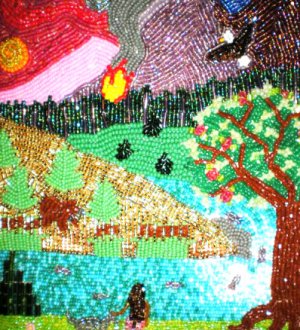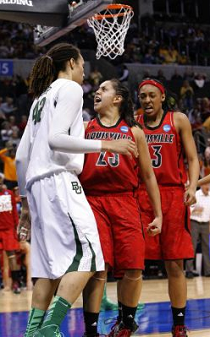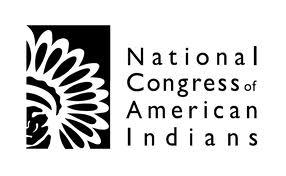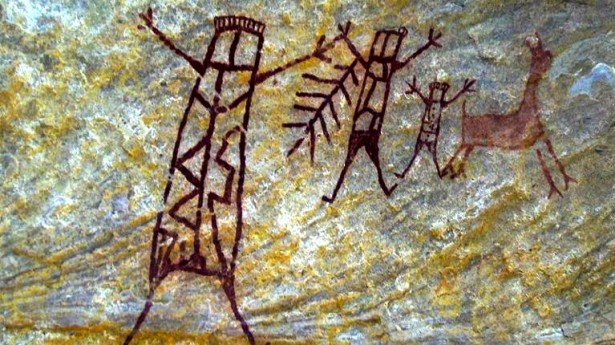The annotated version
NativeApproprations.com
October 9, 2013
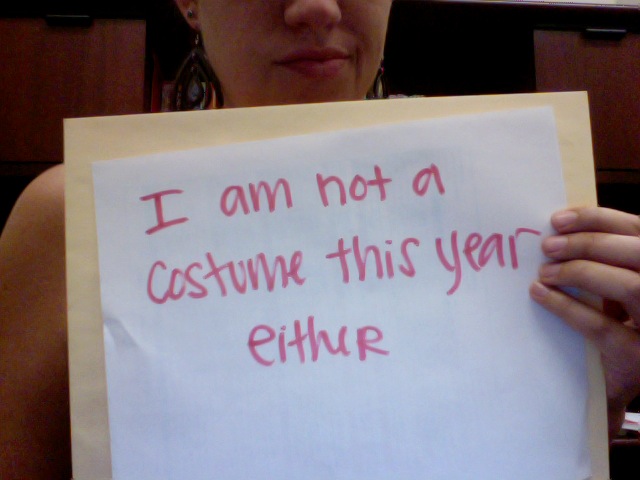
As part of my Halloween series, I’d like to try something a little different. The last couple of days, my 2011 post, “Open Letter to the Pocahotties and Indian Warriors this Halloween,” has started to make the rounds again. The first time I posted it, it caused such a firestorm I had to shut down comments (after it hit something like 500), and I even had to write a follow up post clarifying and confronting some of my own hesitancies with the post. I read it now, two years later, and my reaction is a little different–I stand by my words, and am still very confused as to how this particular post still stirs so much vitrol and hate toward me as a person. It’s started up again, which apparently is now an annual tradition. Here are a couple of the more benign samples from twitter–I actually got called the c-word by one troll today over the post–if you’re interested.
So I thought I’d re-post the original letter, with some annotations and commentary, and let’s figure out together what it is about my language that causes white folks to get real, real mad and defensive, shall we? Yes, I guess I’m performing a rhetorical analysis, on myself. I’m writing a dissertation right now, remember? I’m in crazy academic mode and I can’t get out. Original post in block quotes, thoughts below each.
Dear Person that decided to dress up as an Indian for Halloween,
Ok, pretty basic start. Notice it doesn’t say “white person,” it doesn’t say “racist person,” just person.
I was going to write you an eloquent and well-reasoned post today about all the reasons why it’s not ok to dress up as a Native person for Halloween–talk about the history of “playing Indian” in our country, point to the dangers of stereotyping and placing of Native peoples as mythical, historical creatures, give you some articles to read, hope that I could change your mind by dazzling you with my wit and reason–but I can’t. I can’t, because I know you won’t listen, and I’m getting so tired of trying to get through to you.
That’s 100% honest. The person that decided to dress up as an Indian probably isn’t going to listen to me. But those links actually *go* places. Places where you can read about why this is wrong. Where you can educate yourself. So if you read that paragraph and were like “oh crap, I don’t know any of this”–maybe now it’s time for you to click those. I’ll wait.
I just read the comments on this post at Bitch Magazine, a conversation replicated all over the internet when people of color are trying to make a plea to not dress up as racist characters on Halloween. I felt my chest tighten and tears well up in my eyes, because even with Kjerstin’s well researched and well cited post, people like you are so caught up in their own privilege, they can’t see how much this affects and hurts their classmates, neighbors and friends.
Again, this is actually what happened. I read that post at Bitch and got so frustrated and sad in my office. It’s really, really hard to hear all of the same arguments over and over and over and feel the actual weight of being silenced–because if people were listening, then it wouldn’t be the same mountain to climb every. damn. year. But oh sh*t, I used the word “racist” and the word “privilege”–this is where it starts to go downhill for people. People shut. down. when they hear those two words, especially in the same paragraph. I’ve learned that through the years. I really am pretty sparse with the use of “racist” on the blog, despite the fact that everything I write about on here is racism. Just had to get that out there. But remember the context where I’m writing this post. I was tired, I was sad, I was frustrated. I didn’t feel like dealing with the usual tone-down-don’t-scare-people-off editing I often do. Did you know I do that? Cause I do. Also, notice that I’m appealing to your emotion right now in this paragraph of the post. I’m asking you to think about your classmates, neighbors, and friends. Real people. I don’t know if that scared people too?
I already know how our conversation would go. I’ll ask you to please not dress up as a bastardized version of my culture for Halloween, and you’ll reply that it’s “just for fun” and I should “get over it.” You’ll tell me that you “weren’t doing it to be offensive” and that “everyone knows real Native Americans don’t dress like this.” You’ll say that you have a “right” to dress up as “whatever you damn well please.” You’ll remind me about how you’re “Irish” and the “Irish we’re oppressed too.” Or you’ll say you’re “German”, and you “don’t get offended by people in Lederhosen.”
The most hilarious and ironic part of the response to this post is that I got every single one of these phrases, pretty much verbatim, in the comments. It was like folks didn’t even actually *read* the post, just got to the part where I said “racist” and “privilege” in the same sentence and skipped to the comments. You’re not original. Hate to break it to you. And I don’t see why that unoriginality isn’t seen as a problem to the people who repeat these phrases over and over.
But you don’t understand what it feels like to be me. I am a Native person. You are (most likely) a white person. You walk through life everyday never having the fear of someone mis-representing your people and your culture. You don’t have to worry about the vast majority of your people living in poverty, struggling with alcoholism, domestic violence, hunger, and unemployment caused by 500+ years of colonialism and federal policies aimed at erasing your existence. You don’t walk through life everyday feeling invisible, because the only images the public sees of you are fictionalized stereotypes that don’t represent who you are at all. You don’t know what it’s like to care about something so deeply and know at your core that it’s so wrong, and have others in positions of power dismiss you like you’re some sort of over-sensitive freak.
Ok, this is where sh*t hits the fan. You guys. 1) Anywhere in this paragraph does it say that *all* white people don’t know any sort of struggle? no. 2) Anywhere in this paragraph does it say that all white people are evil? no. But that seems to be the take-away for a lot of folks. I am relating my experiences as a Native person. I DO walk through life everyday fearing the moment when I turn a corner and am confronted with an egregious stereotype of my people. I AM 100% guaranteed every. single. day. to see a mis-representation of my culture. I DO worry about the majority of my people struggling–real struggle–everyday, and I know that the root cause of all of that struggle is colonialism. That’s not an exaggeration. The current state of Native peoples is a direct and ongoing result of colonialism. Colonization by white people. I didn’t realize that was such a remarkable fact to people. But it is a fact–one that’s not actually open for debate. And, ok, I’ll concede with the last line that you as a non-Native person can conceivably care very deeply about something and have others in power dismiss you.
I’ll also concede that using the rhetorical strategy of “you don’t know,” while possibly effective at making a bid for your emotions, is also probably the wrong way to do it, because it causes people to immediately say “you don’t know me! you don’t know what I feel and think!”–you’re right. I don’t know you. But I do know my experience.
You are in a position of power. You might not know it, but you are. Simply because of the color of your skin, you have been afforded opportunities and privilege, because our country was built on a foundation of white supremacy. That’s probably a concept that’s too much for you to handle right now, when all you wanted to do was dress up as a PocaHottie for Halloween, but it’s true.
This again, is where we dig deeper into the words that make a lot of white folks lose their sh*t. I can’t unpack the whole world of white supremacy and privilege in a couple of paragraphs, so I’ll just scratch the surface here. I first would like to take another moment to remind all of you readers that I, too, have white privilege. I don’t hide it. I’ve got light skin and light eyes and 90% of people would look at me and say “oh hey, look, a white person.” So lemme talk to you, white-ish person to white person. Just because someone points out our privilege, and points out that we get benefits because of it, does not mean 1. That we didn’t “deserve” any accolade, opportunity, or accomplishment we’ve received. 2. That we should feel guilty for our privilege 3. That we are racist, bad people. All it means is that we need to stop and think about how messed up it is that we live in a society that was founded on the backs of black and brown folks and how unfair it is to all of us that we still live in that society, and then? *Do* something about it.
So when I’m telling you as the reader in this paragraph that you are in a position of power simply because you’re white, I’m not saying you haven’t worked hard, I’m not saying you haven’t struggled, I’m not saying that there aren’t white people who are in desperate and shitty situations right this very moment. I’m saying that white people, in general, are the people with all the power in our society, and that we live in a society that–generally–favors those with white skin. Yes, we’ve got a black president, but he’s also half white (ha). But really, think about it. And how did white people get that power? Through attempting to eradicate Native Americans (to gain resources) and enslaving Black Americans (to make money from those resources). Again, these are facts. I’m not making this up right now. This is a simple history lesson. But again,to reiterate, am I saying you are a very bad person simply because you are white? No.
I am not in a position of power. Native people are not in positions of power. By dressing up as a fake Indian, you are asserting your power over us, and continuing to oppress us. That should worry you.
This is the part where readers are confronted with the results of that privilege we’re talking about. “Oh sheeit, I’ve got this power I didn’t ask for and now you’re telling me that it’s oppressing people?!?” And yes, I mentioned I have white privilege, but I’m also a Native person, so I’ve got this complicated privilege/non privilege thing going on. It’s messy. But that’s an aside.
People usually have a couple of reactions when confronted with these facts of privilege/oppression. 1. They get super defensive, back to the “you don’t know me! How DARE you say I’m oppressing someone! You don’t know the *intentions* behind my costume choice! My ancestors weren’t even HERE during the founding of the country. That was 500 years ago, why can’t you just get over it!” which, judging by the mail and comments I get, is the top response. But more ideally, 2. They get super uncomfortable, and say “yeah, that does worry me. crap. I feel embarrassed that I’ve gone through my life not even realizing this is a problem. Omg, what do I do now?!” Now, it’s so super easy what you do once you have this realization. YOU DON’T DRESS LIKE AN INDIAN FOR HALLOWEEN. That’s it. That’s all I’m asking for. Seriously. It’s so easy. You just don’t. dress. up. like. an. Indian. In this post, I’m not asking you to become a social justice anti-racist warrior, I’m literally just asking you to not dress up as a fake “Native American.” See, solving oppression is so easy!
But don’t tell me that you’re oppressed too, or don’t you dare come back and tell me your “great grandmother was a Cherokee Princess” and that somehow makes it ok. Do you live in a system that is actively taking your children away without just cause? Do you have to look at the TV on weekends and see sports teams with mascots named after racial slurs of your people? I doubt it.
Ok, another area where readers can and do “tone police” me. I *know* white people have intersections of oppression too. Trans* folks, non-Christian folks, women, on and on, but that still doesn’t mean you can dress up like an Indian an it’s ok. Other POC, this goes for you too. You do not get a free pass because you deal with the effects of white supremacy too. I see lots and lots of images of other POC playing Indian–it is seriously not ok. But the “I’m oppressed too!” and Cherokee princess comments are ones I also get all the time, and was trying to head it off.
Last night I sat with a group of Native undergraduates to discuss their thoughts and ideas about the costume issue, and hearing the comments they face on a daily basis broke my heart. They take the time each year to send out an email called “We are not a costume” to the undergraduate student body–an email that has become known as the “whiny newsletter” to their entitled classmates. They take the time to educate and put themselves out there, only to be shot down by those that refuse to think critically about their choices.Your choices are adversely affecting their college experiences, and that’s hard for me to take without a fight.
Not much to add here. I feel like I can take the heat–this blog is a choice. I know what I’m getting into. But when you’re 18-20 years old and just want to be accepted on your college campus, that’s different. I feel fiercely protective over those kiddos. They don’t deserve that hate just because they dare ask to be respected. So I stand by this.
The most frustrating part to me is, there are so many other things you can dress up as for Halloween. You can be a freaking sexy scrabble board for goodness sake. But why does your fun have to come at the expense of my well-being? Is your night of drunken revelry really worth subjugating an entire group of people? I just can’t understand, how after hearing, first-hand, that your choice is hurtful to another human being, you’re able to continue to celebrate with your braids and plastic tomahawk.
This is still the question I have every year. Seriously. There are so. many. costume. choices. I don’t understand how you can be like, “yes! Indian!” and then hear firsthand from a real Indian (that’s me) that it’s a bad idea and hurtful, and still be like, “yes! Indian!” That goes back to the privilege convo. It’s not the privilege that’s a problem, it’s how you deal with it. So, if you read this post and thought “oh damn, this was a bad idea” and threw away the costume? Congrats. You’re on your way. But if you dismiss it and still galavant around in your costume? Congrats. You’re complacent in the system that benefits from the oppression of Native peoples. And now you have no excuse, because I *told* you. That takes some real privilege, to be able to dismiss an entire group of people like that.
So I know you probably didn’t even read this letter, I know you’ve probably already bought and paid for your Indian costume, and that this weekend you’ll be sucking down jungle juice from a red solo cup as your feathers wilt and warpaint runs. I know you’re going to scoff at my over-sensitivity. But I’m telling you, from the bottom of my heart, that you’re hurting me. And I would hope that would be enough.
Wado,
Adrienne K.
That imagery of the red solo cup and the wilting feathers and running warpaint was pretty good, right? *pats self on back* Thank you, thank you. (I’m kidding)
I’m not sure if this exercise made anyone feel any better, besides maybe me? But I do think it’s really interesting how confronting and dismantling privilege causes people to react in such violent ways. It’s something I’ve seen over and over in my posts, in teaching critical race theory at my school, and in my interactions with fellow grad students. In all honesty, I think that struggle with the privilege conversation is really one that holds us back in having real discussions aboout race. And if you’re reading this, and are thinking, “wow, this is something I really need to learn more about”–learn. Google. That’s what I use. I’m not being facetious here, I’m saying there are amazing resources online. But I want you to learn for yourself, because POC can’t always be the ones to do it. I’ve been learning/writing about these issues for 3+ years now, and I’m still just barely learning the language and words to talk about all of this. I still get uncomfortable and feel like I don’t know enough, and I’m by no means an expert. So I want those of you who are new to all this to start on that journey too. I found this great quote when I was poking around tonight, and I wanted to share:
I’m going to make you work for you education just like I have worked my whole life. In order to truly decolonize your mind, it can’t be handed to you in questions answered by someone else. You must observe, you must feel dissonance, you must feel hurt, but it will be worth it.
–Renleighthegirlking.tumblr.com
So Happy-Almost-Halloween. I welcome your resources in the comments, as well as your awesome non-racist costume ideas.





